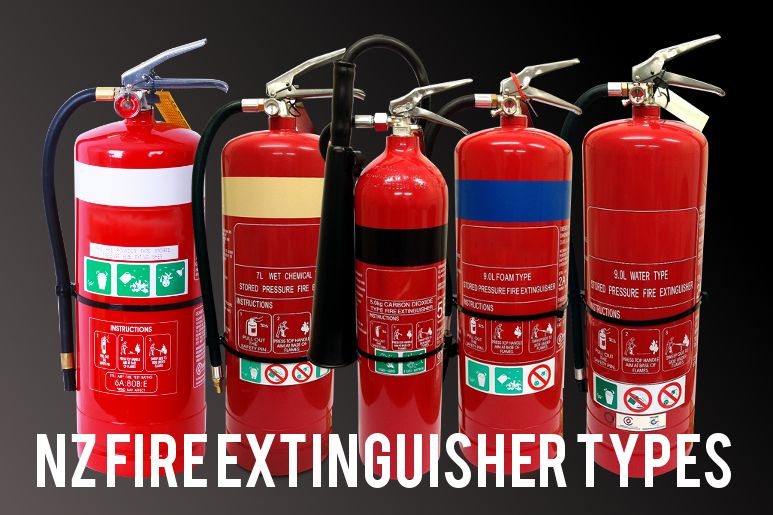Fire is a constant danger when you’re using flammable materials in any workshop. Your safety depends on whether you can
- Identify the cause of the fire.
- Identify the correct extinguisher to use on different fires.
- Correctly operate the fire extinguisher.
Elements of fire

- Fuel, heat and oxygen must be present before there can be a fire:
- Fuel is anything combustible: any solid, liquid or gas that can burn, for example, wood, paper, oil, solvents and so on.
- Heat can come from flames, sparks, friction, electrical sources, hot pipes and equipment.
- Oxygen comes mainly from the air but also from some chemicals.
To put out a fire, remove one of the three elements by:
- Removing fuel to starve the fire.
- Removing oxygen to smother the fire.
- Cooling the heat by using water.
Types of fire
The fuel that is burning dictates the kind of extinguisher you use to fight the fire. To help you understand this concept, you need to know how fires are classified and which fire extinguishers are suitable for each class. We will look at the following classes of fire A, B, E, and D.
Class A Fires
Class A fires start when materials such as paper, rubbish, wood, cloth or other carbon-based materials ignite.
Class B Fires
Class B fires involve flammable liquids such as paints, oil and petrol. With these materials, its the vapours or fumes that burn rather than the liquid. Because the vapours are lighter than the air, they can drift away from the seat of the fire, and then ignite, causing what’s called a flash off. This instantaneously increases the size of the fire and is very dangerous.
Class D Fires
Class D fires are fires involving combustible metals such as sodium, magnesium, lithium and potassium. Specialised dry powders are available to control these fires.
Class E Fires
Class E fires are electrical fires. They usually start because of short circuit or arching in loose connections, or because wiring becomes overheated. You must be very careful here because there is the added risk of electrical shock as well as the threat from the fire. Switch off the power if you can safely.
Types Of Fire Extinguisher

There are five types of fire extinguisher found throughout the working environment, they are
- Carbon Dioxide
- Dry Powder
- Foam
- Water
- Wet Chemical
The type of fire extinguisher you can use for each class of fire is as follows
Class A Fires: Water, dry powder, foam, co2 and wet chemical extinguishers are suitable for this kind of fire. Your best plan of attack is to locate the nearest fire hose. This will give you a constant stream of cold water. The temperature at the base of the fire will cool to a point below that needed for combustion to take place.
Class B Fires: these fires can be put out using foam, dry powder or co2 extinguishers. These starve the fire of the oxygen it requires for burning. Water is useless in these situations because it will only spread the fuel around and increase the base of the fire.
Class D Fires: these fires require specialised powders and are usually designed for a specific metal such as lithium, sodium, magnesium, etc. Sand can also be used to smother the fire. Using water would produce hydrogen (H2) and cause an explosion.
Class E Fires: use dry powder or co2 extinguishers to fight electrical fires. Neither of these conducts electricity, and both starve the fire of the oxygen it requires for burning.
You must never use water on an electrical fire. Water and electricity do not mix. Water is a good conductor and will suck the electricity to the source of the water.
Fire extinguishers are colour coded to help you identify the contents and which kind of fire they should be used on. They have easy to follow operating instructions. Make sure that you read these instructions before you have to use an extinguisher. This will save you time in a real emergency situation and help you feel more confident.
Fire Hose Reels

Fire hose reels should be located to provide a reasonably accessible and controlled supply of water to combat potential fire risks. The length of a fully extended fire hose is normally between 18 to 36 metres. Hose diameters are usually 13 or 19 millimetres ( internal measurement).
Fire hose reels usually deliver a minimum of 14 litres of water per minute. However, some hose reels have flows of up to 75 litres per minute. A control nozzle attached to the end of the hose enables the operator to control the direction and flow of the water.
from
https://fireprotectiononline1.wordpress.com/2019/09/28/nz-fire-extinguisher-types-and-fire-class/